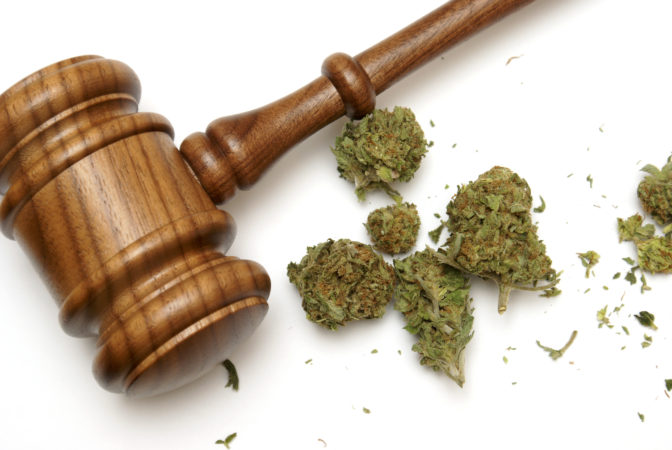 By Igor Grant
By Igor Grant
On 8 November, voters in California, Maine, Massachusetts and Nevada approved ballot measures to legalize recreational cannabis. It is now legal in a total of eight states. This creates potential problems for road safety. How do we determine who’s impaired and who’s not?
The effects of alcohol vary based on a person’s size and weight, metabolic rate, related food intake and the type and amount of beverage consumed. Even so, alcohol consumption produces fairly straightforward results: the more you drink, the worse you drive. Factors like body size and drinking experience can shift the correlation slightly, but the relationship is still pretty linear, enough to be able to confidently develop a blood alcohol content scale for legally determining drunk driving. Not so with marijuana.
We have a reliable and easy-to-use test to measure blood alcohol concentration. But right now we don’t have a fast, reliable test to gauge whether someone is too doped up to drive.
The need is urgent. The 2014 National Survey on Drug Use and Health reported that 10 million Americans said they had driven while under the influence of illicit drugs during the previous year. Second to alcohol, marijuana is the drug most frequently found in drivers involved in crashes.
But how do you know when you’re too stoned to drive? How can police tell?
My colleagues and I at the Center for Medicinal Cannabis Research at UC San Diego have received a $1.8m grant from the state of California to gather data about dosages, time and what it takes to impair driving ability – and then create a viable roadside sobriety test for cannabis.
Alcohol and marijuana both affect mental function, which means they can both impair driving ability.
Some elements of cannabis use are similar. Potency of strain affects potency of effect. Marijuana and its active ingredient – THC – alter brain function, affecting processes like attention, perception and coordination, which are necessary for a complex behavior like driving a car.
Regular users tend to become accustomed to the drug, particularly in terms of cognitive disruption or psycho-motor skills. Because they are accustomed to the drug’s effects, this means they may function better relative to naive users.
Smoked marijuana produces a rapid spike in THC concentrations in the blood, followed by a decline as the drug redistributes to tissues, including the brain. The psychological impact depends upon a host of variables.
Let’s say, for example, a person smokes a joint and gets into his car. THC levels in his blood are likely to be quite high, but his cognitive functions and driving skills may not yet be impaired because the drug hasn’t yet significantly impacted the brain. But another driver might use cannabis but wait a few hours before getting behind the wheel. Her THC blood levels are now quite low, but she’s impaired because drug concentrations remain high in her brain.
Six states have set limits for THC in drivers’ blood, and nine other states have zero-tolerance laws, making the presence of THC in the driver’s blood illegal.
But unlike alcohol, evidence of cannabis use can linger long after its effects have worn off, particularly if people are regular users or consume a lot in a single episode. Among chronic users, it may not clear out of their systems for weeks. Therefore, unlike blood alcohol concentration, the presence and amount of different cannabis compounds in the blood or urine do not necessarily tell you whether the driver is impaired due to marijuana.
This is why a quick and simple assessment of whether someone is driving while under the influence is difficult. And that is a necessity for any type of effective roadside sobriety test.
To create a fast and easy-to-use test, there are a few questions about marijuana that our team at UC San Diego has to answer.
Current blood, breath, saliva and urine tests have been challenged as unreliable in court, though they are used to prove that someone has ingested marijuana.
In California and elsewhere, the primary assessment of impairment is the law enforcement officer’s field sobriety test.
One specific challenge is determining the relationship of dose or potency, and time since consumption, to impairment. While there has been some research in this area, the studies have not comprehensively examined the issues of dose and time course of impairment. The lack of data is one of the big reasons for our work now.
Later this year, we will begin controlled experiments in which participants will smoke varying amounts of cannabis in varying strengths and then operate a driving simulator. We’ll look for impairment effects in the immediate period after exposure and over subsequent hours.
We’ll also investigate the relationship between THC and other cannabinoid levels in blood to different measures, such as saliva or exhaled breath. Roadside blood sampling is impractical, but perhaps there is an easier, reliable indicator of marijuana exposure.
Finally, there is the goal of finding the best way to assess impairment. A driver suspected of being high might be asked to follow with his finger a square moving around on a device’s screen, a test of critical tracking. Or she might perform tablet tests that more validly simulate the demands of driving.
The idea is to determine whether and how these measures – drug intake, biomarkers, objective cognitive performance and driving ability – correlate to produce an evidence-based, broadly applicable assessment standard and tool.
This piece was originally published on The Conversation.


